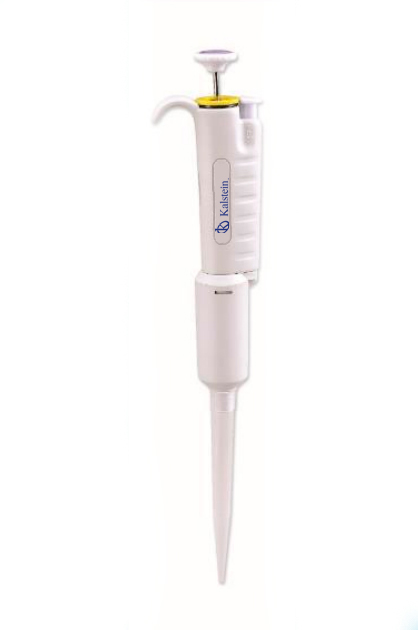A micropipette is a laboratory equipment that is used to absorb and transfer small volumes of liquids and allow its use in different laboratory techniques. They are very useful devices in the handling of microvolumes, because they allow pipetting in a much safer, more comfortable and with better precision than with serological pipettes.
In general, micropipettes are useful for handling any type of liquid, because their tip can be eliminated, since they use disposable plastic tips. Regarding its structure, we can say that a micropipette is made up of a plunger, a suction device and a liquid dispenser.
Types of micropipettes
- Fixed volume: These are micropipettes that do not allow the volume to be adjusted, but are already configured to take a fixed volume of the liquid to be handled, which makes them highly precise micropipettes in the measurements they take.
- Variable volume: Variable volume micropipettes are the ideal precision instrument for the liquid measurement needs of clinical and quality control laboratories. The volumes that these instruments can measure vary depending on the model and type of pipette: the most common, called p20, p200 and p1000, admit a maximum of 20, 200 and 1000 μl, respectively. Being able to measure a volume interval that the device allows according to its precision, that is to say with a p20 I can also measure a volume of 15 μl but not more than 20 μl.
- Multichannels: A multichannel micropipette, as its name indicates, is a micropipette that has several channels, its operation is similar to that of single-channel micropipettes, through air displacement. Depending on the model they can be from 8 to 12 channels. They allow all channels to be activated at the same time. Saving considerably the execution time of a technique. These can be of fixed volume or they can also allow you to select the desired volume.
Recommendations for the proper use of a micropipette
- Never turn the volume indicator dial beyond the upper or lower limit of the micropipette.
- The tips are one of the most important parts of the micropipette, it is necessary to make sure that they are the correct size and are always sterile.
- Pipetting is most accurate when the instrument is held at an angle of less than 20 ̊ vertical.
- When releasing the liquid, it is recommended to rest the tip of the micropipette lightly against the test tube, thus the surface tension helps to dispense the content.
- A common operator mistake is to push the plunger to the second stop before filling the tip of the micropipette.
- It is important to check that the tip fits with minimal effort and that it comes out just as easily; It is always advisable to review the micropipette manual to avoid making mistakes.
At Kalstein we are MANUFACTURERS and we offer you new micropipettes at the best PRICES on the market. So we invite you to take a look at: https: HERE

